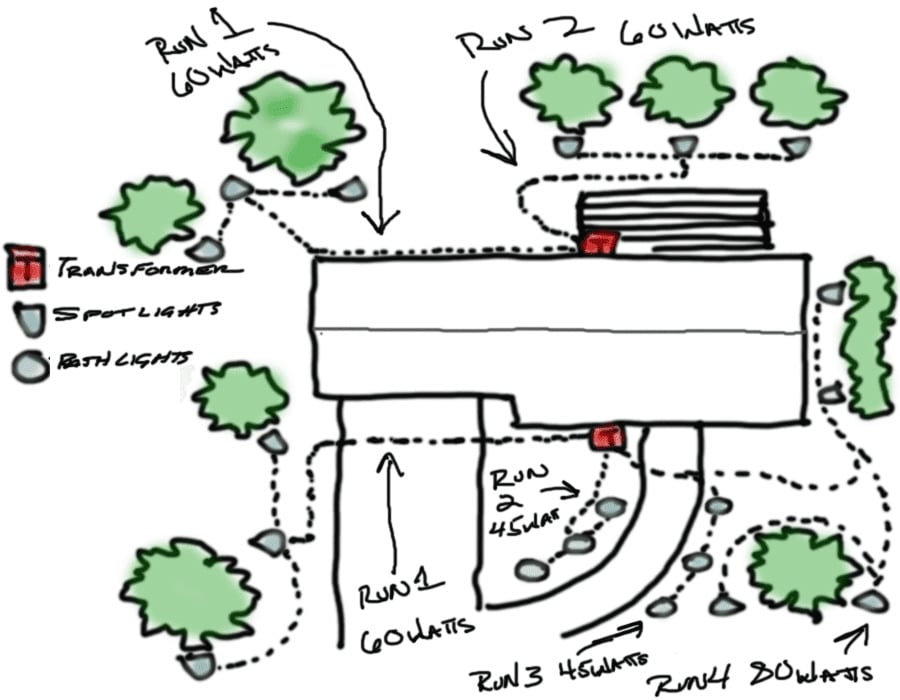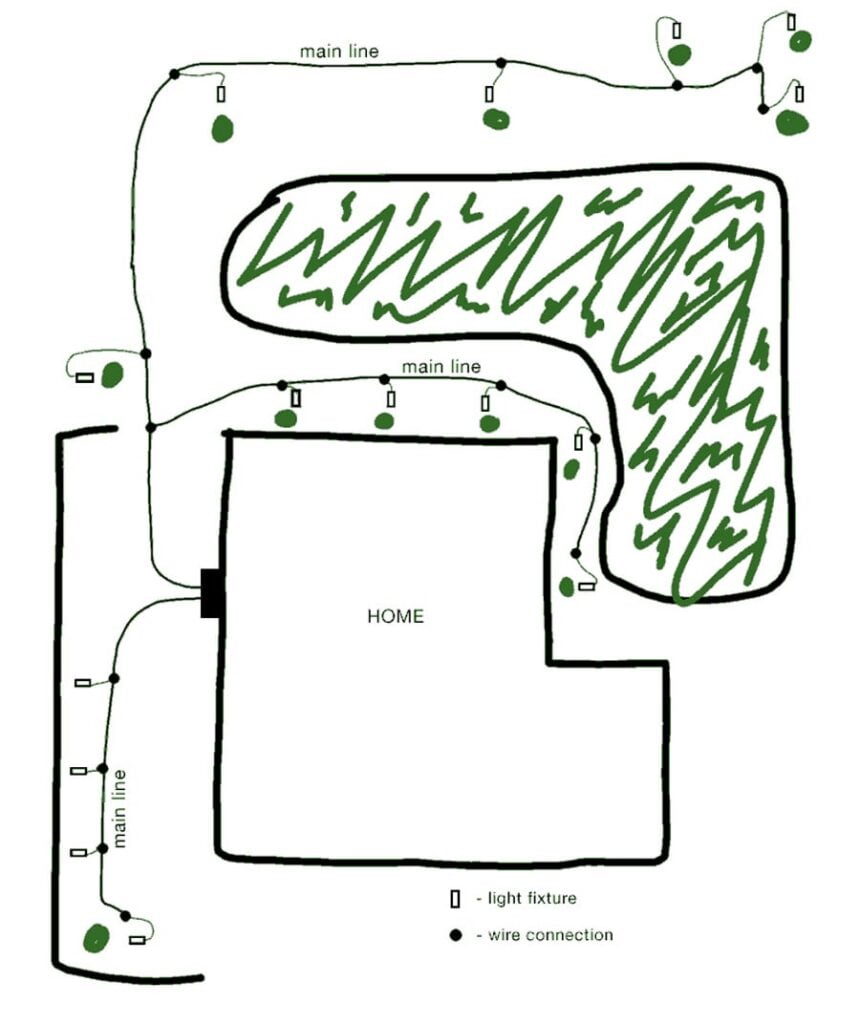As a professional landscape lighting designer looking to install and operate a new low voltage lighting system, you need to consider what transformer will be required to convert your standard line voltage outlets using 110-120V into your outdoor low voltage 12V-15V lighting design. This consideration as an outdoor lighting installer allows your landscape lights to function properly for many years ahead and will reduce issues with lights failing or ending up with weak outputs further down the line of wire connections around the property landscapes, keeping your clients happy and referring customers for many years ahead. So, to answer the question about How Many Landscape Lights Can I Connect to which Transformer Wattage, we must first look at some of the basic lighting design specs and considerations.
1) How many lights will I be installing?
2) What is the total Watts and Voltage Amp draw of the landscape lights being installed in an area?
3) What wire gauge size will I be using, 18/2, 16/2, 14/2, 12/2 or 10/2?
If you want the super duper shortcut to finding the minimum wire gauge or the minimum transformer you can get away with, or the maximum load or the maximum distance of a run… then grab your mobile device, open the app store and download Landscape Lighting Calculator. The app calculators take into consideration VA loss over length of wire by gauge, tap voltage and more. Learn more at https://landscapelightingcalculator.com/ . (note: Landscape Lighting Calculator is not a product of Garden Light LED.) Critical considerations before starting out: If you connect low voltage lights directly to line voltage power, the higher 120 voltage will cause them to burn out immediately. Therefore, a low voltage transformer power source must be used, which can then plug into your main power source to properly run your landscape lights each night. If you don’t have a GFI outlet available, seek a professional electrician to install one for your new low voltage lighting system prior to installation where the transformer is desired to be placed out of sight. If using the more powerful magnetic landscape lighting transformers, it’s always best to not go over 80% of its maximum wattage rating. Now, to figure out how many 12V lights you can power outside with a single low voltage transformer, look to the wattage and VA ratings for the fixtures being installed. Once that has been considered and calculated with the number of lights on the systems run, you can look for a low voltage transformer that has a higher minimum wattage rating.

Transformer power spec considerations: Calculating Voltage Amps as opposed to Watts, will show you the true power draw on your line, and this is why it is advisable to use this number to ensure you don’t purchase a landscape lighting transformer that isn’t adequate to power your lighting design installation, since it will only cause issues for you down the road eating into your profit and your customers happiness.
So, if you want to connect ten landscape spotlights to a small transformer, and the lights utilize 2W / 4VA / 20 watts halogen equivalent light output power each, you would want a 100-watt transformer. (Example of calculations: 10 lights X 4 VA = 40 voltage amps).
Again, if you want to connect twenty landscape lights to a low volt transformer, and the lights are pulling 4W / 7VA / 35 Watts of halogen power draw on the system, you would need a 300 watt transformer. (20 lights X 7 VA = 140 voltage Amps, so it’s best to use a 300 Watt) since 150W transformer will not give you enough buffer of the recommended 20-25% below maximum watts rating, for your new landscape lighting system to stay properly lit for many years ahead.

Additionally, when considering what wire gauge to use for your landscape lighting design installation, its best to understand that different gauges have their own pros and cons. Note: smaller wire sizes are often more economical and larger wire sizes are stronger, however the smaller ones will also reduce the distance of power being provided to your lights in the ground, and may require conduit to stay safe from dreaded landscaper cuts to your lighting connections. In this example of installing your landscape lights with specific wire gauges as another consideration for which transformer wattage to buy, we can benchmark some calculations knowing that typically, a 300-watt transformer can power 100 feet run using 16 gauge, or 150 feet using 14 gauge, or 200 feet when using the most popular 12 gauge cables. It’s always advisable to check with the lighting manufacturers territory managers and sales teams prior to purchase, to discuss any other factors and considerations to best determine the proper transformer and wire gauge to use for your specific landscape lighting design system.
Since there are so many factors to consider to create a professional lighting design project, it’s always best to consult your experienced lighting design specialist, as they can advise you on the best type of wire (ie: standard copper, vs anti-corrosive wire) along with the proper transformer and landscape lighting models / finishes to buy for your specific applications. Since often, they have handled and managed a very similar installation using the design techniques desired in your area, to ensure your new installation stays working great years later, and worry free.